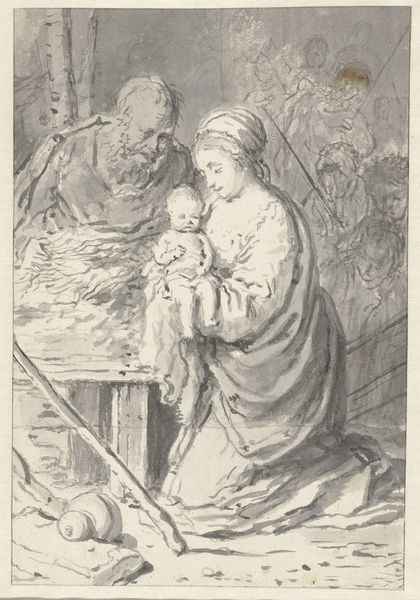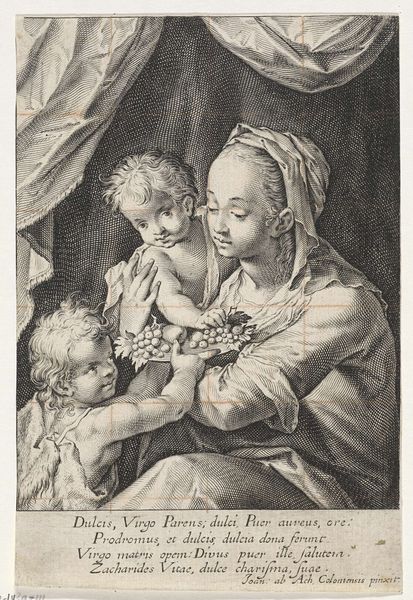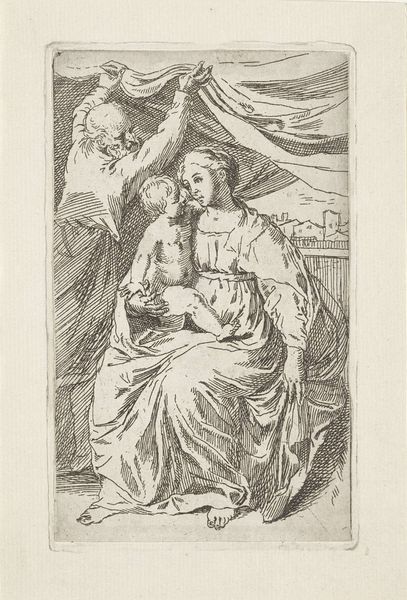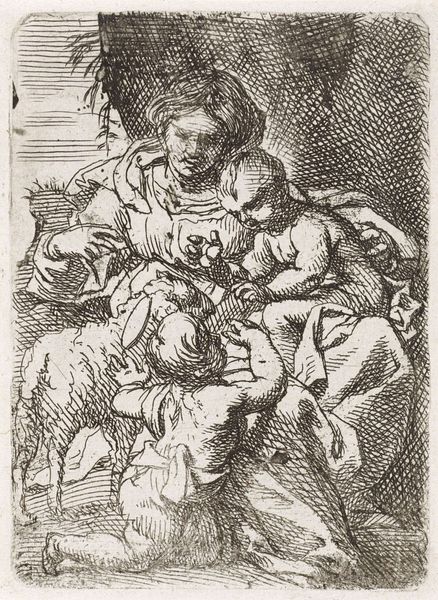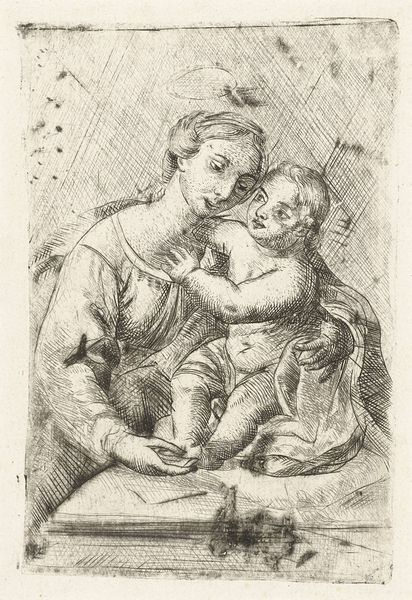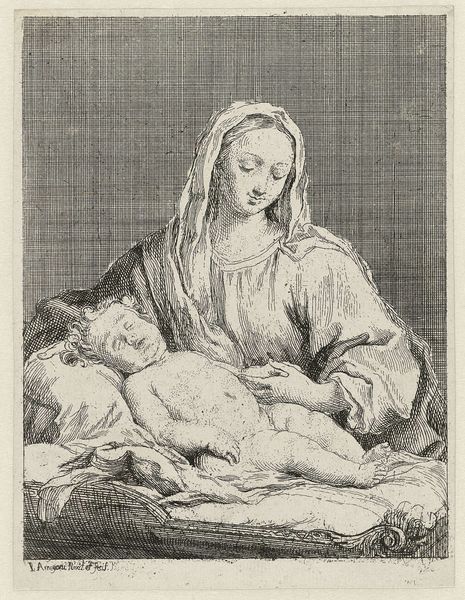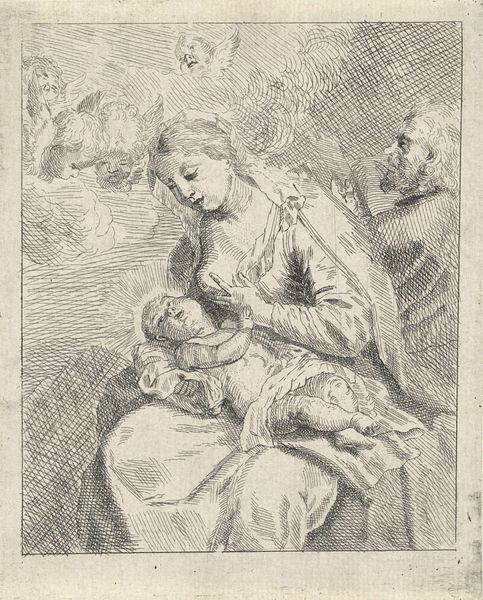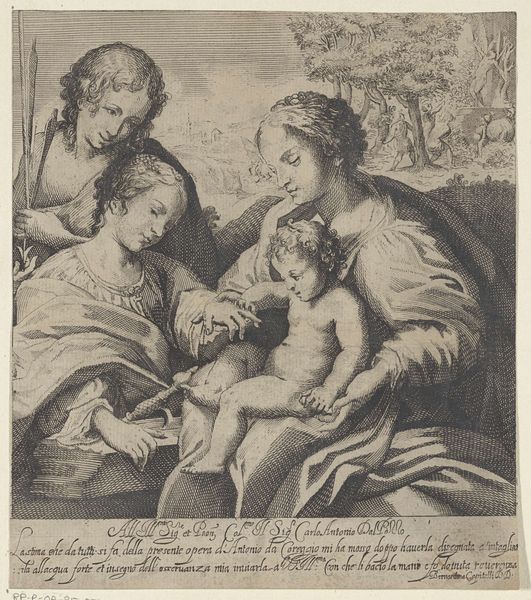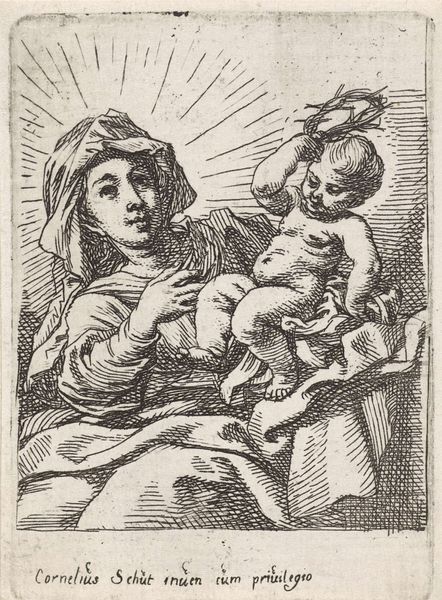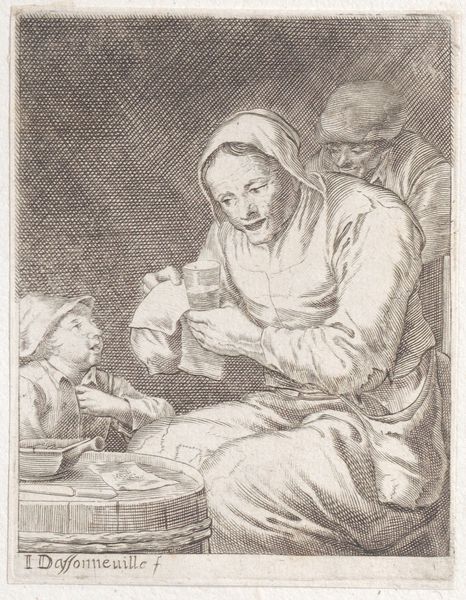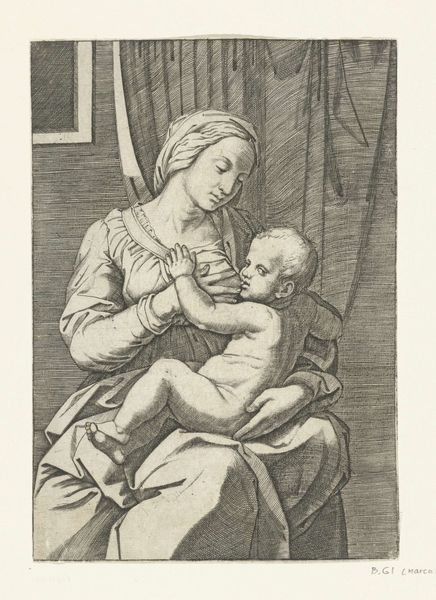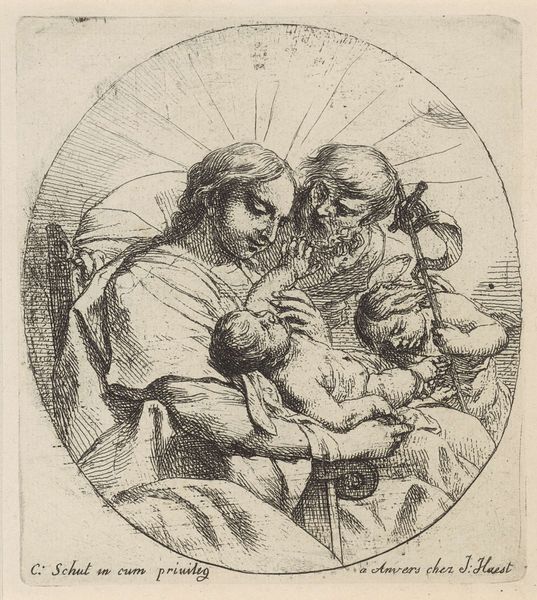
print, engraving
#
portrait
# print
#
pen sketch
#
pencil sketch
#
old engraving style
#
pen-ink sketch
#
genre-painting
#
northern-renaissance
#
academic-art
#
engraving
Dimensions: height 178 mm, width 132 mm
Copyright: Rijks Museum: Open Domain
Curator: Here in Gallery 21, we see “Grammatica,” a print potentially from as early as 1587 or as late as 1690, attributed to Cornelis Drebbel, here in the Rijksmuseum’s collection. Editor: It’s an intimate scene, isn't it? The tonal range of the engraving is quite captivating. It immediately pulls you into the domestic sphere. There is a somewhat stark contrast of dark versus light tones creating a certain somber, yet comforting mood. Curator: Indeed. Prints like these had a pedagogical function beyond their pure artistic merit. Notice the focus on literacy. It embodies humanist ideals concerning education and civic virtue so central to the late Renaissance and Northern European social reforms. Editor: Absolutely. The woman is actively instructing a young child on what seems to be an alphabet board. The presence of another child or adolescent looking on also speaks to the importance of shared learning and, perhaps, intergenerational knowledge. However, considering power dynamics, are we really meant to celebrate education for all, or is it access and controlled education according to one's gender and social position? Curator: I agree the work underscores the socio-economic realities. But let us observe the setting. It suggests a household of some means, not just due to literacy being foregrounded, but also by the presence of comfortable domestic furnishings in the background. Prints like this circulated amongst the emerging middle classes. Editor: True. What’s also intriguing is the implied narrative. Is it designed to convey that the family—or at least some members of it—are investing in intellectual pursuits as a way of ensuring progress, for their family and society as a whole? It feels quite prescriptive. Curator: Possibly so. What’s most captivating to me is the composition. Note the attention to detail through the meticulous engraving style. Look closer to see the fine lines giving form to clothing, facial features and other intricate domestic items behind the subjects. Editor: Considering its function, I am moved by the emphasis of instruction within a household; still, it is hard not to ask who has the luxury of such educational time, and under what constraints were children allowed or disallowed education across economic classes. It makes me pause and reflect on the inequalities of our education system. Curator: This viewing experience underscores that our reflections should always question the narrative authority present. Editor: Exactly, what could the subjects be thinking at that time while sitting for Drebbel?
Comments
No comments
Be the first to comment and join the conversation on the ultimate creative platform.
